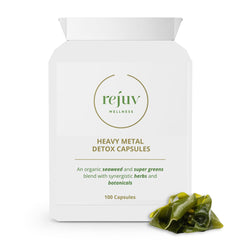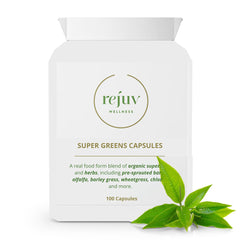How to use food as medicine for a healthy glow, inside and out!
We all need to revisit the nutritional value of what we eat regularly to ensure that what we eat habitually is in line with healthy eating. I wrote this Healthy Food Guide for our friends at KORA Organics, and I want to share it with you in case you don’t receive their emails or follow Miranda Kerr and her team on social media!
Nutrition is not a one-size-fits-all
Most people know how to eat well: to eat more plants, less meat, less sugar, less gluten and less dairy these days—but your age, body metrics, activity level, life stage, blood markers (e.g. cholesterol) and genetics also affect your nutritional needs.
The premise is that eating more plants and fewer animal products will prevent disease. This doesn’t mean that you need to be vegan, but pesca-vegan with wild fish is a great base diet (and incorporating heavier proteins 1-2 times a week as per your metabolic type allows.)
Here is my healthy food guide to get you started using food as medicine for a healthy glow, inside and out:
- Listen to your body and stop eating when you feel nearly satisfied.
- Focus on quality rather than quantity.
- Try to eat organic, seasonally, and locally.
- Eat a varied diet and a variety of food across all food groups. If you eat seasonally, this should happen naturally. Eating the same food every day causes your body to build up intolerances.
- A healthy diet should include fruits, vegetables, protein, fibre and fats to support all essential body functions.
- Try to eat a majority of whole foods and foods with fewer than five ingredients. Avoid chemicals, antibiotics, GMOs, food additives, colours, dyes, artificial sweeteners and preservatives.
- Drink more water. On average, women should drink about 2 litres and men 3 litres per day: Limit sugar-sweetened soda, juices, lattes, and tea with lots of sugar. Don’t drink your calories!
- Include prebiotic and probiotic foods for a healthy gut microbiome.
- Chew your food thoroughly before swallowing. Try to chew softer foods 5-10 times and more dense foods up to 20 times before swallowing.
- Fill your plate with mostly vegetables, half green, and the rest as colourful as possible.

The Color Nutrition Guide
RED
Healthy inflammatory response, cell protection, cancer-protective, hormone balance and gastrointestinal, liver and heart health.
ORANGE
Skin health, immune health, and a good source of pro-vitamin A. Cell protection, reduced all-cause mortality, immune health, and cancer-protective.
YELLOW
Skin health, eye health, healthy inflammatory response, cell protection, cognition, heart/vascular health and cancer-protective.
GREEN
Skin health, hormone balance, healthy inflammatory response, brain health, cell protection, and heart and liver health.
WHITE | TAN | BROWN
Hormone balance, anti-microbial, cell protection, gastrointestinal, heart and liver health, and cancer-protective.
BLUE | PURPLE | BLACK
Healthy inflammatory response, cell protection, cognitive, heart and liver health, and cancer-protective.
Rainbow Capsules
Order the Rejuv Acai Anti-Oxidant Capsules if you find it difficult to “eat from the rainbow” daily. Taking two of these capsules per day will give you all the nutrients listed above. You can also add an extra boost by taking our Super Greens Powder or (if you dislike the taste of super greens) the Sea & Soil Super Greens Capsules – both contain essential ingredients to support great skin and reduce inflammation.
A Healthy Food Guide: Medicine
MAGNESIUM
Helps with anxiety, mood disorders and irritability. Found in seeds, beans, dark leafy greens (spinach/chard), dark chocolate and cocoa. It also helps to balance blood pressure and contributes to energy production, bone formation, protein synthesis, carbohydrate and fat metabolism and muscle and nerve function.
B COMPLEX VITAMINS
Essential for brain function, neurotransmitter function, detoxification, inflammation, and gene expression.
VITAMIN B6
Found in fish, meat, whole grains, eggs and nuts. Essential for the metabolism of fats, proteins, and carbohydrates and supports healthy enzyme function.
VITAMIN B12
Found in eggs, meat, dairy food, fortified nutritional yeast, shellfish, and seaweed. Essential for protein metabolism and the formation of red blood cells and the central nervous system. This is an incredibly important vitamin for vegetarians and vegans to supplement, as it is harder to obtain proper nutritional amounts when not consuming animal protein.
VITAMIN B9 (Folate)
Found in leafy greens. It improves memory and concentration and prevents Alzheimer’s and Dementia.
VITAMIN D
From exposure to the sunlight and found in dairy products, herring, salmon, trout, sardines, mackerel, and fortified tofu. It promotes calcium absorption in the gut, is needed to maintain healthy bones, and helps brain function, mood, and cognitive function.
CALCIUM
Found in dairy, leafy greens, white beans, black-eyed peas, sardines, mackerel, salmon, and anchovies. Necessary for cell-to-cell signalling, muscle function, hormone secretion and bone health.
For peace of mind, to cover all the above vitamins and minerals, you can fast-track by taking two of our Immune Restore Capsules daily.
OMEGA 3 FATS
Found in oily fish, walnuts, flax and chia seeds. Helpful if you struggle with depression, ADD, and other brain issues. It also supports heart and eye health, helps reduce inflammation in the body, and assists in maintaining already normal triglyceride levels and blood pressure.
[ For extra support: Omega 3, Antartic Krill Omega 3 ]
PROBIOTICS
Found in yoghurt, kefir, kombucha, and pickled vegetables. These support a healthy gut microbiome, which influences the digestion and absorption of nutrients and the function of your brain.
[ For extra support: Gut Healing Pack, Probiotic Max ]
PREBIOTICS
In foods such as artichoke, garlic, onions, leeks, asparagus, bananas, barley, oats and flaxseeds. They all support a healthy gut microbiome.
[ For extra support: Prebiotic Immune Complex ]
A Healthy Food Guide To Create Your Plate
PROTEIN
Protein is crucial for your body to grow, maintain and repair your body; it provides energy and helps to regulate hormones as well. Try to include it in some form at every meal.
Proteins To Have:
- Fish – A lean, healthy source of protein. Opt for wild and low in heavy metals (smaller fish tend to have less heavy metals.) Enjoy up to three times weekly and limit the portion size to 85g.
- Nuts & Seeds – Provide healthy fats, fibre, minerals and vitamins, promote longevity and brain health. A good guideline is to have 20-30g a day.
- Beans/Pulses – High-quality protein and fibre. If buying canned, avoid options with added salt, sugar or chemicals. Stay away from canned beans if you suffer from digestive issues. A good rule of thumb is a serving a day (80 g).
- Eggs – Eggs are full of vitamins, minerals, high-quality protein and essential nutrients. Choose free-range and organic. While there isn’t a set limit, we recommend a maximum of 2 per day.
- Chicken/Poultry – Always organic, grass-fed, grass-finished, and sustainably harvested from regenerative farms. The appropriate serving size should be similar to the size of your fist.
Proteins to Limit or Avoid:
- Red meat/animals with four legs or more; (grass-fed and organic) – 1 serving per week maximum.
- Processed meats such as hot dogs, bacon, and sausages.
Rejuv Supplements That Help:
FATS
Healthy fats can help you to feel full after a meal, help your body to absorb nutrients, produce essential hormones, keep your brain working and mood balanced and reduce inflammation.
Fats To Have:
- Unsaturated fats: found in fatty fish, olive oil, vegetables, nuts, algae, avocado, flax seeds and hemp seeds. This fat is proven to help maintain healthy cholesterol levels and reduce risk of cancer and diabetes.
Fats To Limit Or Avoid:
- Saturated fat: in red meat and dairy products, sausages, cheese, butter, ice cream, chocolate, yoghurt, coconut oil etc. This fat can increase blood cholesterol levels and the risk of developing heart disease.
- Trans fat/partially hydrogenated oils: found in margarine, vegetable shortening, partially hydrogenated vegetable oil, deep-fried fast foods, and commercial baked goods. Trans fats increase your risk of developing heart disease and stroke. They are associated with a higher risk of developing type 2 diabetes.
Healthful Fat Substitution Ideas:
- Instead of sautéing with butter – use coconut or grape-seed oil.
- Instead of regular peanut butter, switch to a nut butter such as almond butter (free of trans fats).
- Switch sour cream to organic kefir or plain yoghurt.

CARBOHYDRATES
Carbohydrates To Have:
- Complex whole grains and low-glycemic unrefined carbohydrates.
These carbohydrates balance blood sugar levels and are more satisfying: barley, spelt, wheat berries, quinoa, gluten-free oats, brown rice, black rice, teff, buckwheat, amaranth, and sweet potatoes.
To keep lean, limit complex carbs after 4 pm.
Carbohydrates To Limit Or AVOID:
- Unhealthy sources of carbohydrates such as highly processed refined-grain carbohydrates and flour.
- These carbohydrates spike blood sugar levels due to their high GI and don’t keep us full or satisfied: white bread, pastries, cereals, and crackers made from white rice or white flour.
- Excessive amounts of starchy vegetables (like potatoes).
- Corn.
SUGAR
Foods high in sugar and sweeteners will spike blood sugar, stimulating insulin (a fat-storage hormone) to signal the body to store glucose rather than use it, leading to weight gain.
Excessive starchy carbohydrates can convert to fat and, as a result, raise blood triglycerides associated with cardiovascular disease and fatty liver. Insulin also stimulates cholesterol production.
To Limit Or AVOID:
- Avoid sugary drinks: soda, fruit juices, and store-bought smoothies. (These tend to use apple juice as a base.)
- Avoid all artificial sweeteners, as they have been linked to cancer and Alzheimer’s.
- Eat starchy carbohydrates with protein and fat to balance blood sugar levels (e.g. an apple and seeds/nuts, rather than an apple alone).
- Eat fruits with lower sugar content, e.g. berries, apples, plums and pears, with a GI of 50 or lower.
- Be aware of other names – sucrose, glucose, fructose, lactose, malt, malt extract, syrup, and honey are all different names for sugar.













